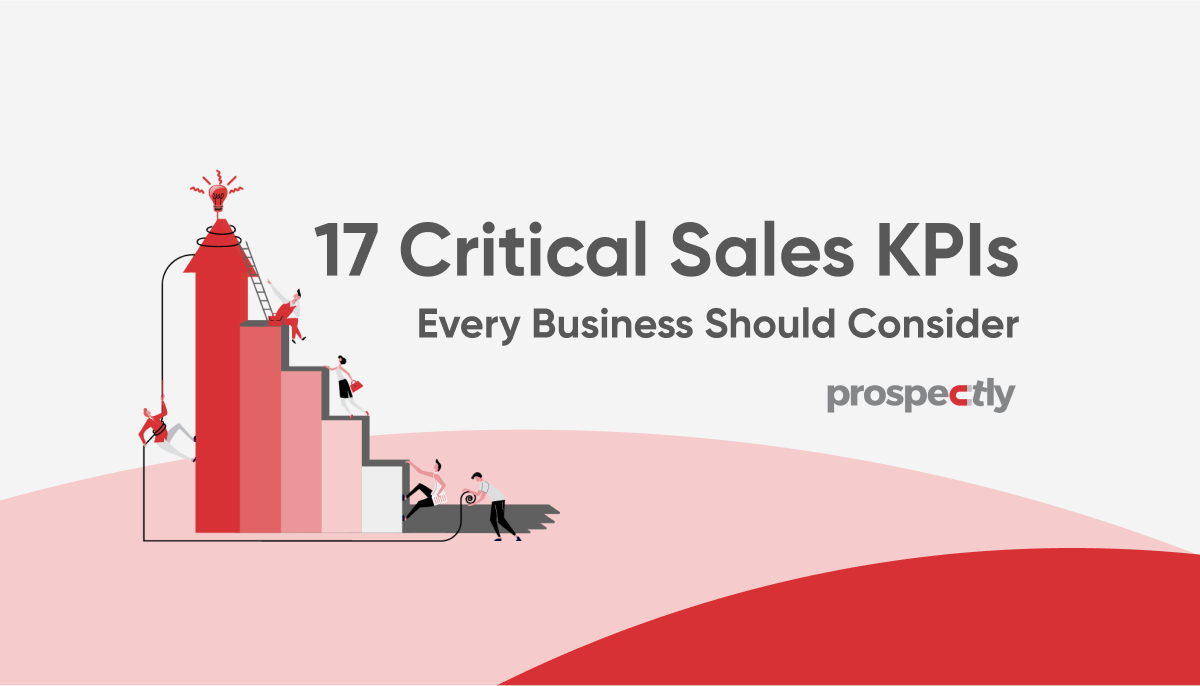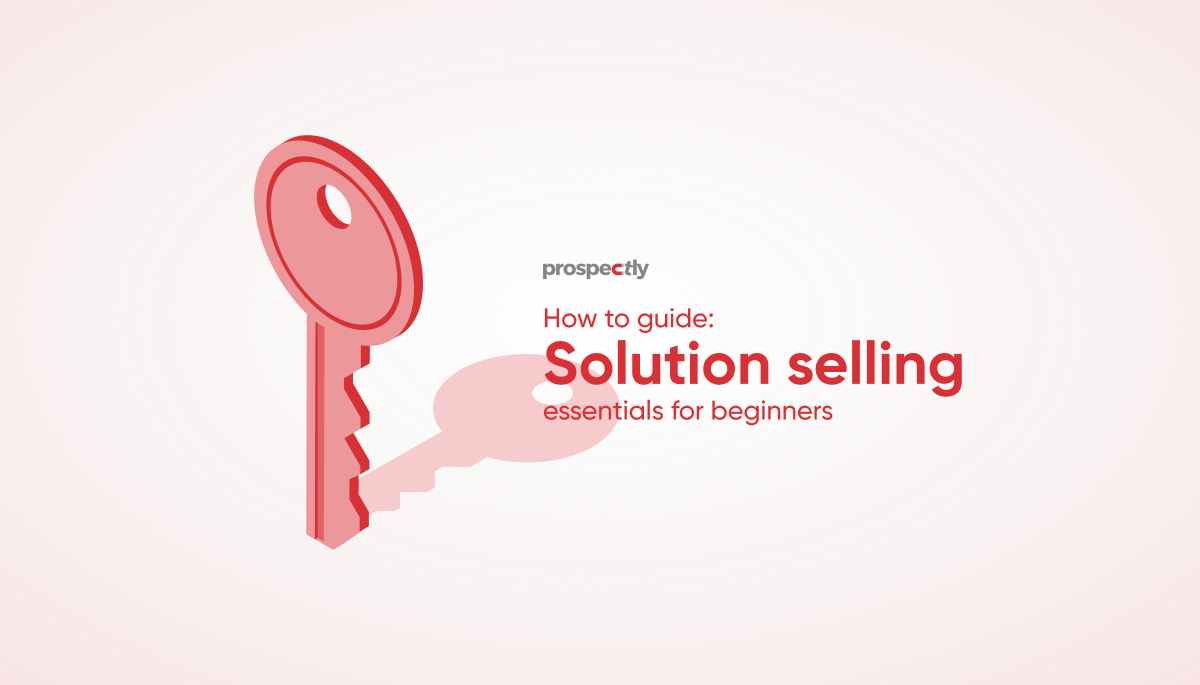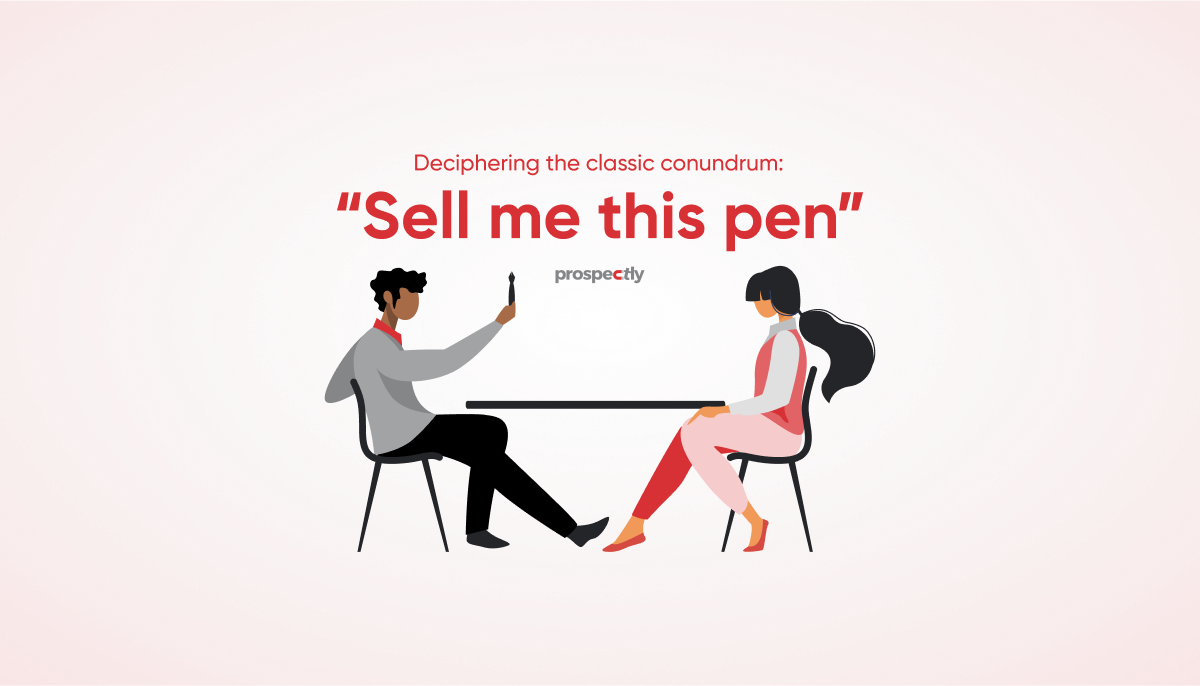18 Buying signals to land more deals
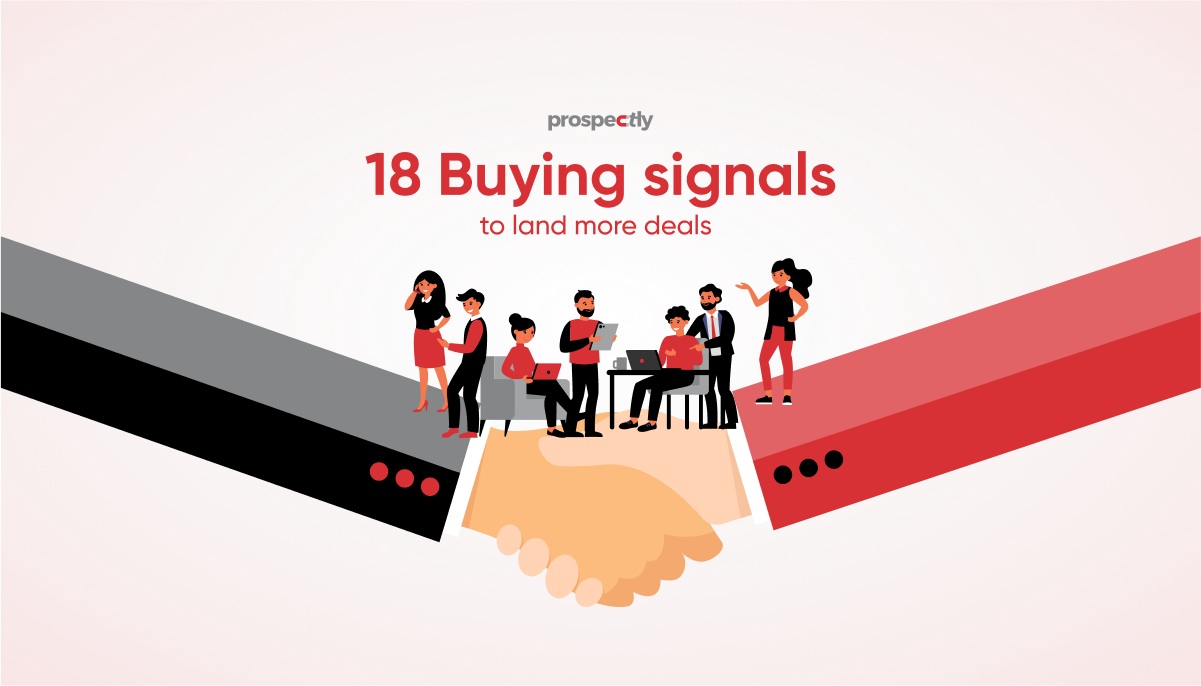
Have you ever wondered about a customer’s intent at the end of an online demo or a sales meeting? Are you often unsure about the sale until your prospect signs the contract or rejects the offer? If you answer yes to both these questions, you are missing out on buying signals. This blog will help you identify these subtle but critical cues and explore strategies for closing deals – better and faster.
But, what exactly are these signs?
What are buying signals?
Buying signals are verbal or non-verbal behaviors displayed by prospective customers expressing buying intent. Questions from your prospects that imply interest in your products/services can be verbal buying signals. Some of the non-verbal buying signals are holding eye contact, body language, tone of speech, etc.
You can track these patterns by analyzing online activity and using SAAS applications in sales processes. The ability to detect these signals early in the sales cycle will help you offer relevant insights to customers at the right time, leading to faster closures and greater sales. It also saves you time on prospecting efforts by segregating interested prospects from unqualified leads.
But how do you recognize these signals? Below is a list of 18 verbal and non-verbal buying signals indicators that you should not ignore.
Top 18 buying signals you should not miss

1. Displaying positive body language
Whether you meet a prospect online or face-to-face, their mannerisms throughout the meeting can tell you a lot about their interest levels. If someone intently listens to you and displays gestures like steady eye contact or head nods, you are about to have a productive meeting.
2. Signing up for free trials
When people use free trials and then go radio-silent, do not misinterpret it as a lack of interest. They may have questions about your product, or maybe they are looking for a particular feature they could not find. Offer these prospects personalized services, like enrolling them for automatic product-related emails on tutorials, product features, etc. You can also offer them a complimentary call from your help desk on product features and usage. This extra effort can go a long way in building trust with prospective customers.
3. Proactively sharing pain points
Have you ever had a prospect readily share their business needs and sore spots? That is a clear indicator that they are urgently looking for a remedy. Be quick on your feet and demonstrate how you can customize your products or services to address their issue.
4. Downloading gated content
People who are willing to provide their contact information to consume your content are generally interested in what you have to offer. This content can be either in the form of a downloadable newsletter, e-books, or whitepaper. Reach out to such prospects and figure out what they are looking for.
5. Actively engaging on social media
ICPs (Ideal Customer Profile) who consistently interact with your social media content by liking, sharing, or commenting on your posts are your low-hanging fruit. They most probably like your product/service, or your content addresses their business needs.
Related: The “whats”, “whys”, and “hows” of social selling
6. Attending webinars/in-person conferences
Look out for prospects who spend their time and energy attending your webinars or face-to-face conferences. They are sending out strong buying signals and are definitely interested in what you have to say.
7. Seeking out particulars of your products/services
When a prospect requests the specifics of your offering, it shows that they are aware of their needs. They probably would have done their due diligence and are ready to make a deal, provided you can offer what they want. You can validate this signal if they have asked you about a particular feature or visited a specific web page multiple times.
8. Interrupting your pitch/presentation with questions
During an in-person meeting or online demo, take it as a positive sign if a prospect stops you midway to clarify doubts. It shows curiosity on their end and interest in what you have to offer. Be prepared to answer their queries and leave time for Q&A sessions between your pitch.
9. Inquiring on next steps
If a prospect gives you a specific date for a follow-up meeting or indicates interest in speaking to you again, consider it your lucky shot. This suggests that they need to finalize a few more things before agreeing to the sale.
10. Asking about post-sales services
Once you have communicated about your offerings, if your prospect has questions on onboarding, support, etc., they are happy with your product. They are trying to understand if they will be well-supported after you have made the sale. At this juncture, your job is to make them feel secure by explaining in detail about your support team/services.
11. Requesting for price
If a prospect enquires about price, do not be alarmed or misconstrue it as an objection. They might be just trying to decide if your product/service fits their budget. Disclose the price and explain how your offering can address their core requirements.
12. Checking on payment terms
When a prospect checks about payment terms, they are often ready to make a purchase and want to figure out the most convenient way to seal the deal. Take this as an opportunity to educate the customer on payment terms and try to provide multiple options (credit cards, payment plans, auto payments, etc.), so they can act quickly.
13. Cross-examining terms and conditions
When a prospect hints about policy agreements like money-back guarantees and warranty specifics, they most definitely are ready to purchase. At this stage, they are trying to establish a trust factor before deciding. You can detect such signals on sales calls, or web visits on your warranty page.
14. Looking for client testimonials
When a prospect asks for case studies or referrals from your existing customers, consider it your buying sign. They might also imply this by visiting your website testimonial page. This signal indicates that they are trying to validate your service quality and establish if you would deliver on your promise. Make sure you incorporate success stories during your sales pitch or follow-ups. It also helps to showcase video/written testimonials.
15. Confirming ease of migration
Sometimes, your prospects might have already used your competitors and are used to working on a particular framework. So if you get questions about migrating to your product, it is possible they are considering this deal and looking for easy ways to transition from their current vendor. New product trainings are often perceived as inconvenient and disruptive for teams. Take this as an opportunity to demonstrate your USPs and how you can easily integrate your product with their tech stack.
16. Speaking like an existing customer
Your calls or email communication with prospects can indicate their interest. If you observe your prospect’s language change from objective to possessive tone, they would have already decided about your offering. You may hear or read emails with phrases like –
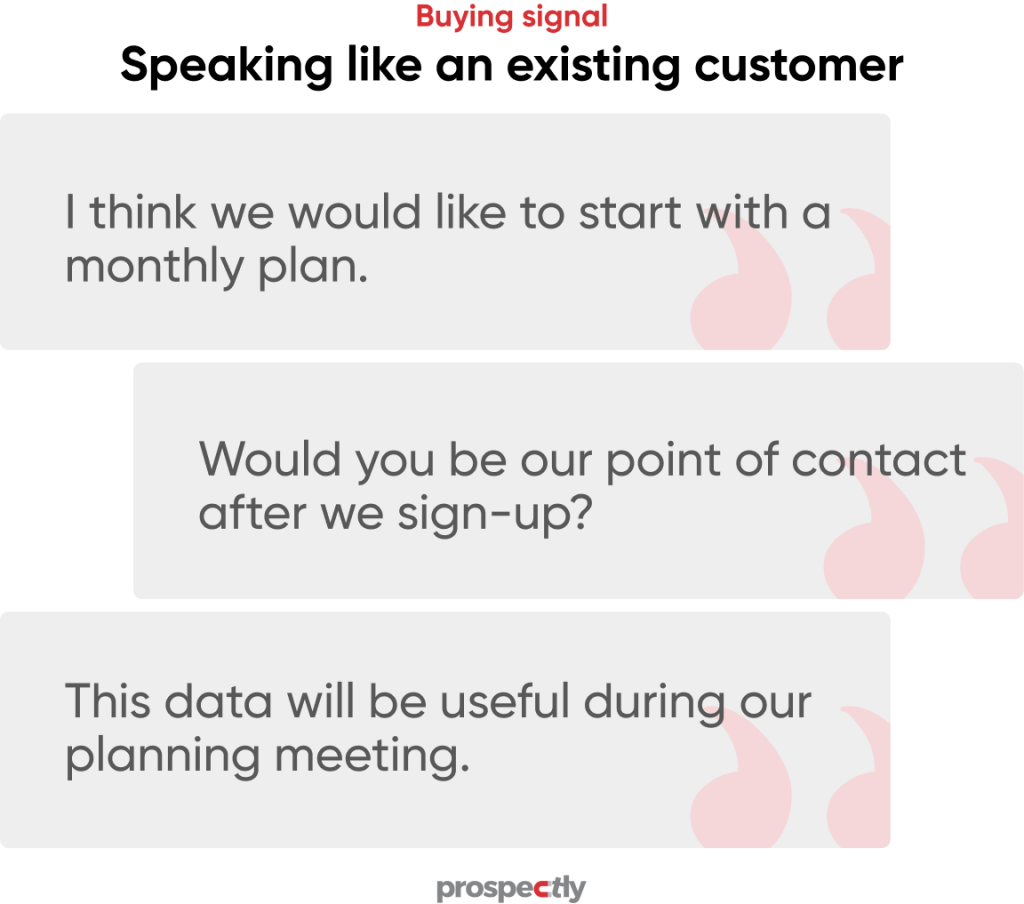
17. Seeking advice from peers
This signal may indicate that your prospect is happy with your offering and taking a second opinion from colleagues. You can confirm this sign if you have multiple web visits from the same brand, your prospect copies you in emails, or loops in colleagues on calls.
18. Responding promptly and coherently
Prospects who respond swiftly often know what they want. Also, notice the quality of response. If someone is willing to explain things in detail, consider that a positive sign.
You can detect these 18 buying signals by analyzing the four main data types. Let’s dive individually into each one of them.
Data-driven buying signals
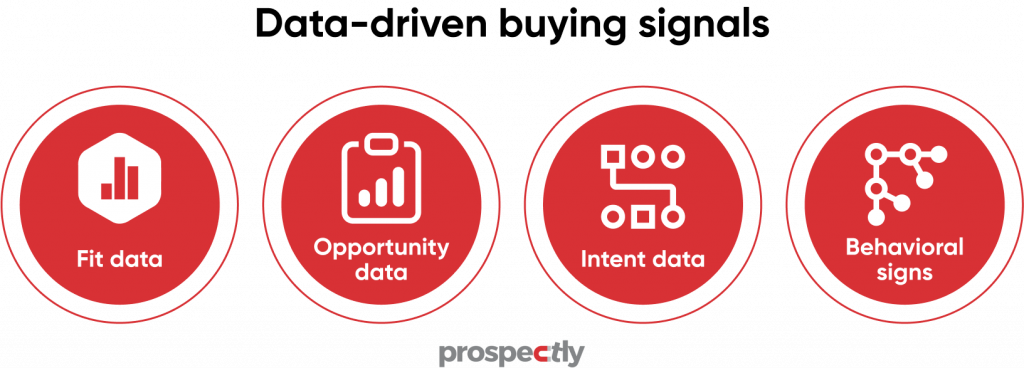
Fit data
Fit data helps you determine a prospect’s needs for your products or services based on the following factors.
- Firmographic data – categorizing prospect companies based on a set of characteristics like industry type, company size, company structure, etc.
- Technographic data – segmenting prospects based on their technology stack
- Demographic data – grouping prospects based on their demography
Opportunity data
This data type identifies the conditions within a prospect company signifying the ideal time to seek a sale. For instance-
- Corporate restructuring
- Company events
- Product launches
Intent data
Intent data expresses your customer’s intent in procuring your products/services. It indicates the right time to approach your prospect for closing the deal.
Behavioral signs
Prospects with specific needs or pain points demonstrate these signals, which can be your signal to reach out and address their concerns. Some of these signs are –
- A phone call or email
- Reaching out in-person
- Digital footprint due to viewing a particular web page, blog, posting a query, etc.
How to procure buyer intent data?
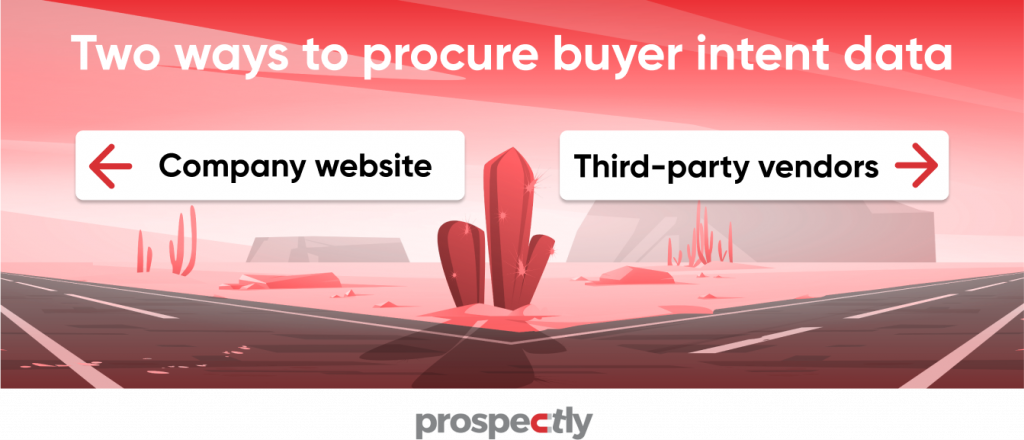
97% of B2B marketers believe that third-party intent data will give brands a competitive advantage. But, how do you gather buyer intent data? Here are two main ways.
Company website
When a prospect visits your business website, you can run analytic tools to capture buyer activity, like time spent on a particular page, form submission, etc.
Third-party vendors
What if a prospective customer is looking for solutions you offer, but not on your site? You can buy third-party intent data from a third-party vendor. These vendors or platforms collect digital research activity from data sharing cooperatives like media publishers, B2B websites, etc.
What’s next?
As you would have realized by now, identifying these buying signals is often quite simple, and all you need is attention to detail. But knowing these signals is not enough. Get into the habit of tracking buying signals consistently and prioritize follow-ups with customers who demonstrate buying intent. Strike while the iron is still hot! Observe prospect behaviors, track their activity, address their queries, offer relevant content, ask probing questions and do whatever you can to win that deal.
